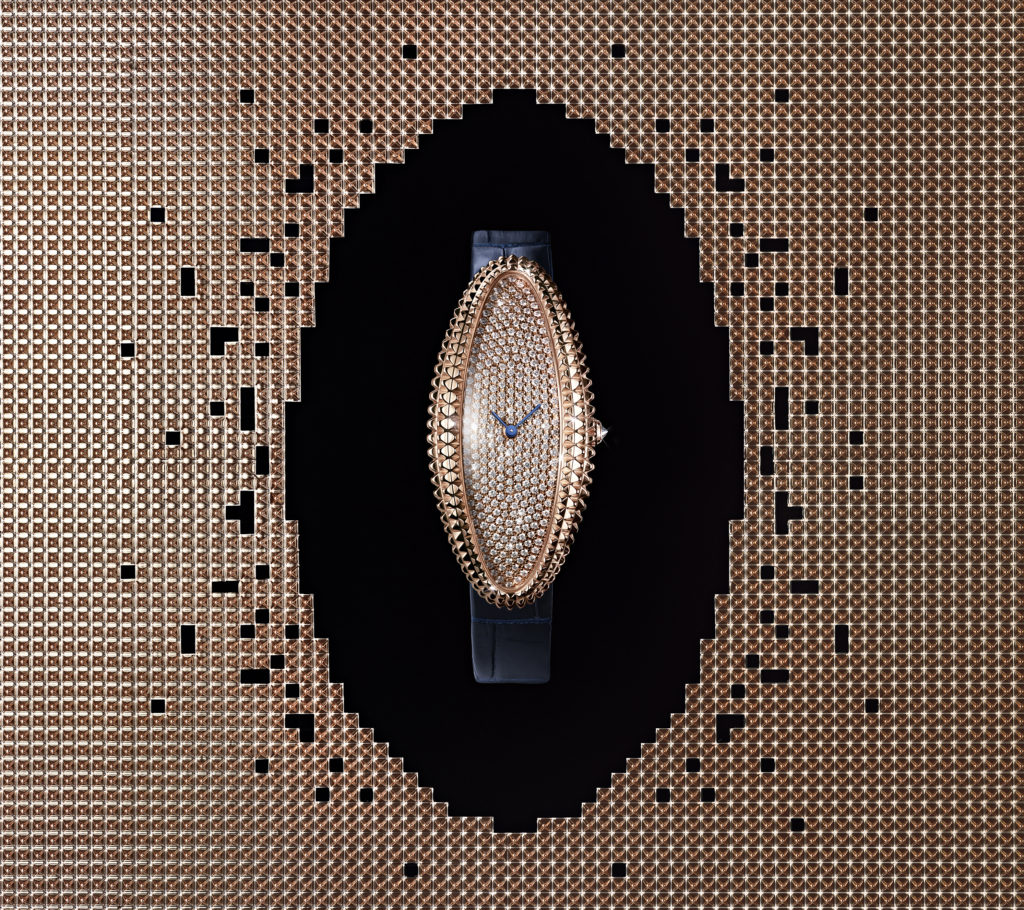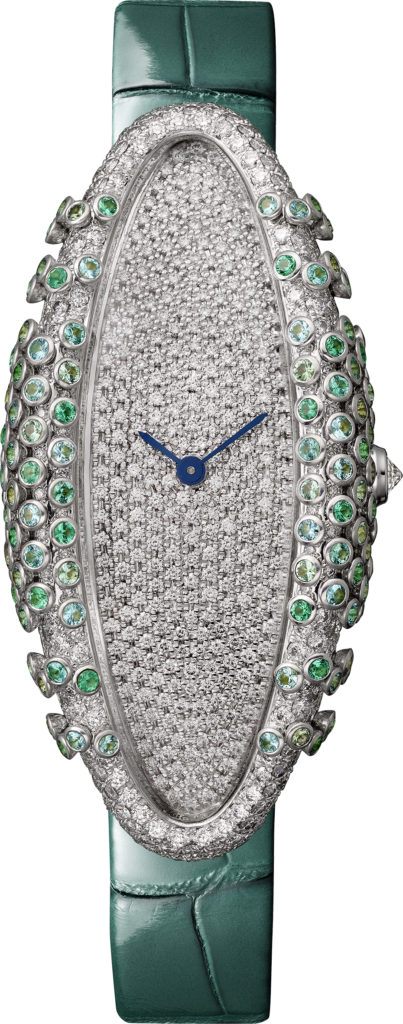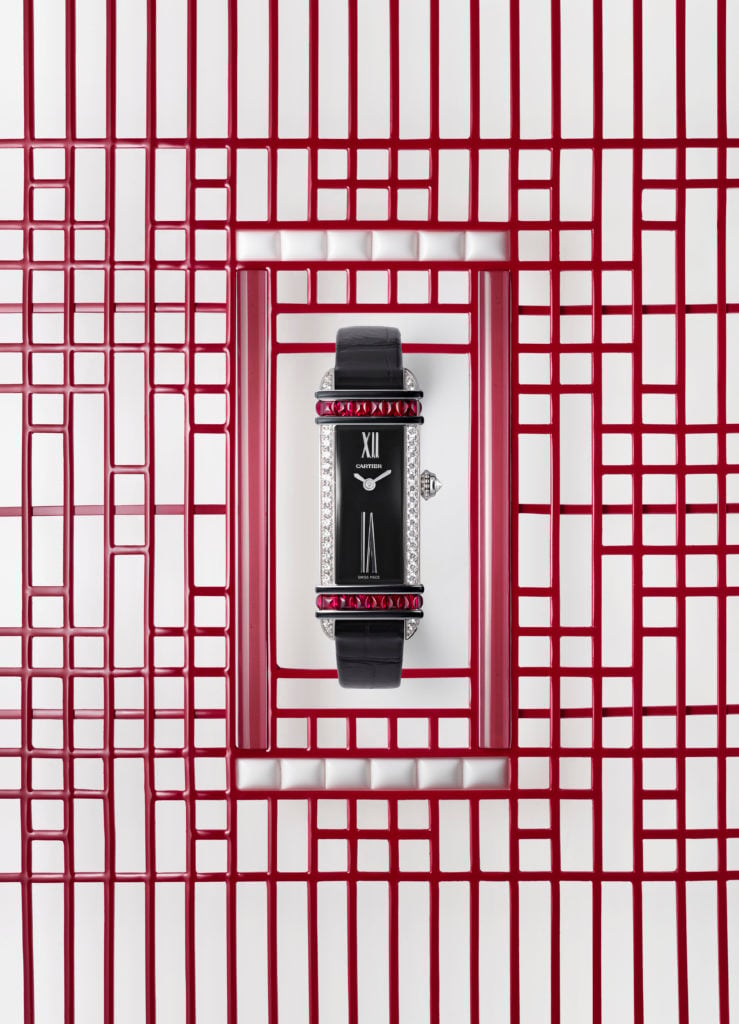Art World
For Its Newest Collections, Cartier Looks to Its Rich Past to Reinvent the Present
The jeweler's president and chief executive explains why the company is digging into its roots.

The jeweler's president and chief executive explains why the company is digging into its roots.

Nazanin Lankarani

At the Salon de la Haute Horlogerie (SIHH), the annual watch industry trade fair that closed in Geneva last Thursday, Cartier has long stood as a historic pillar.
The fair, which brings together many of the luxury brands owned by the Richemont group, including Cartier, provides for the storied jeweler an opportunity to preview its novelties of the year, and to bring attention to the shapes, know-how, and art of presentation that together make up the inimitable style of Cartier.
“At SIHH, we take the opportunity to show who Cartier is, and we do so through our products and by recreating a whole universe inside our vitrines to reflect our style,” says Cyrille Vigneron, Cartier’s president and chief executive in an exclusive interview in one of Cartier’s elegantly decorated private salons in the sprawling space that makes up its exhibition booth at the Palexpo Center. “We try to do more every year at the SIHH.”

La Panthère de Cartier manchette.
By “more,” Vigneron makes reference to the care that goes into its curated presentations that set the stage for Cartier’s new product launches.
“Each vitrine is designed individually to express something about our products,” he says. “As an ensemble, they express the diversity of our mise en scène and everything that is artistic about us.”
This year, Cartier brought sophistication and minimalism to its vitrines, each of which acted as a tiny stage to enhance the singular refinement of the piece displayed inside.
Thus, the gold spikes of the sculpted bezel on the new Baignoire Allongée timepiece were accentuated on an oval-shaped bed of small black and gold spears. The feline languor of La Panthère de Cartier was enhanced by the coiled metallic curves of a gold slinky, around which the new panther timepiece was wrapped.
While its presentations have become more refined every year, Cartier’s collections have in turn become more streamlined. Since 2016, when Vigneron took over the jeweler’s reins, the company made a strategic decision to present fewer new models each year, while strengthening the brand’s identity.
“In the past, we had an inflation of novelties dispersed into a plurality of forms and in directions that were quite diverse because Cartier’s design territory is so vast,” Vigneron says. “We tread in well-defined territories that are essentially feminine or elegant masculine. What we have today re-centered the territory of the Maison.”
Judging by the lineup of historically inspired novelties at this year’s SIHH, the strategy is now bearing fruit.
“What distinguishes Cartier are a number of historic forms that make us different from everyone else,” Vigneron says. “It was important for us to emphasize that singularity.”
This year, Cartier has revisited its repertory of forms through three main collections—Cartier Libre, Cartier Privé, and Santos—whose origins are found in its archives, demonstrating a return to tradition through variations on classics.
“What characterizes Cartier is the force of its design,” Vigneron says. “As jewelers, our métier is all about attention to detail. Everything we do, including our technique, is in the service of design.”

Cartier Libre Baignoire Allongée Celadon.
In the Cartier Libre collection, one of its strongest shapes of this year is the Baignoire, or “bathtub,” which dates back to 1912, when Louis Cartier took the traditional round watch shape and elongated its design. Over the years, the shape evolved, becoming a slightly curved oval by 1958. In the 1960s, inspired by the spirit of “Swinging London,” Cartier’s London workshops stretched the dial of the Baignoire even further, into a lengthened version known today as the Baignoire Allongée.
This year, Cartier showed new iterations of the Baignoire Allongée, including a striking new sculpted-bezel version that Vigneron singled out as most singular.
“The new Cartier Baignoire Allongée with the gold spikes is a very ‘rock and roll’ model that has a lot of force,” Vigneron says. “It has a ‘punk’ aspect that is very contemporary.”
“We have modified the design while maintaining the purity of the original Baignoire shape, all without any nostalgia,” he says.
Cartier’s new “Tonneau” watch is another update of the barrel-shaped design whose origins go back to 1906, the second oldest shape made by the Maison. In 2006, Cartier celebrated the 100th anniversary of its tonneau-shaped dials with new models. This year, it has augmented that collection with new timepieces in platinum and pink gold.

The Cartier Libre Tank Chinoise Red, set with ruby cabochons.
Hence in the Baignoire Allongée line, a new “Black” version was shown in yellow gold, set with black spinels, yellow sapphires, and brilliant-cut diamonds, along with a “Celadon” version that, for the first time, adds a note of color with emeralds and Paraiba tourmalines.
Like the Baignoire, la Panthère de Cartier has gone through numerous iterations in several decades. This year, it has been reinterpreted as an oversized “manchette” watch with a wide, soft-link bracelet, and a “mini” version, both embodying an essence defined by the Maison as “a celebratory, hedonistic and ultra-feminine spirit.”
Color, like form, has a special place in Cartier’s repertory of inspiration. This year, a perceptible revival of color—what Cartier calls its “technicolor vision”—could be seen in particular in the red and black Tank Chinoise. For this timepiece, Cartier returned to a model from 1921, modifying it in a stylistic exercise wherein red rubies highlighted by black enamel trace the contours of a rectangular dial.
“It is true that we have chosen to dig deep in our patrimony with this year’s collections,” Vigneron says. “But we have done so with an eye on what Cartier is known for and admired.”